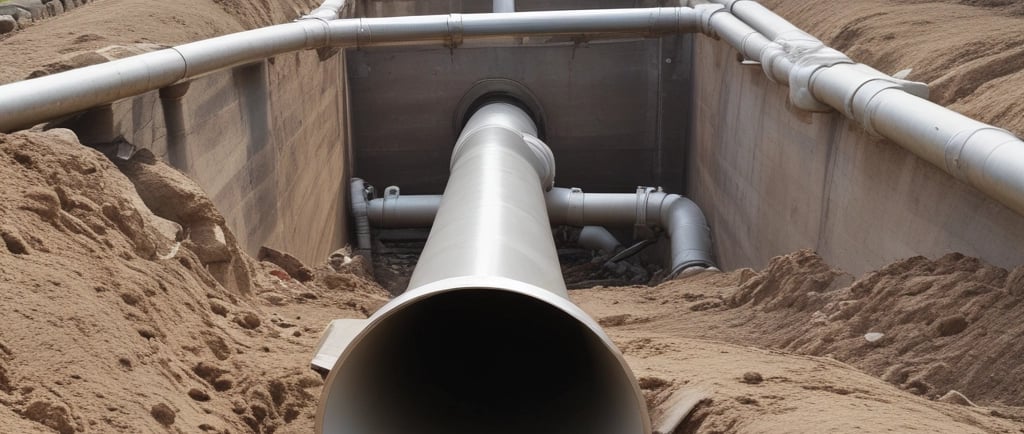Unraveling the Real Goals of Large Infrastructure Projects
Recap of the East Side Sewer Meeting and a brief overview of how large infrastructure projects and outside players affect our community.
TOOLS YOU CAN USE
Nancy Drew
2/11/20254 min read


Understanding Large Infrastructure Projects
The successful execution of large infrastructure projects requires a commitment to transparency, public engagement, and accountability. Stakeholder involvement is essential to ensure that the needs and aspirations of the community are taken into account throughout the planning and implementation phases. Public engagement can take various forms, including community meetings, surveys, and consultations, which provide opportunities for residents to voice their concerns and contribute to decision-making processes. Furthermore, transparency in budgeting and project timelines helps build trust among stakeholders, ensuring that public resources are utilized efficiently and effectively.
The Role of Stakeholders in Infrastructure Development
Infrastructure development is a multi-faceted endeavor involving various stakeholders, each playing a pivotal role in shaping project outcomes. Local governments serve as crucial facilitators, establishing regulations and approving plans to ensure that projects align with community needs and governance frameworks. Investment companies are another integral stakeholder, providing the necessary funding and financial resources to kickstart infrastructure schemes. Their decisions often influence project scale and scope, making them key players in determining which projects are prioritized. The interface between investment companies and local governments can sometimes present conflicts of interest; when profit motives clash with community welfare, tensions can escalate, leading to public dissent.
Community members, often the end-users of infrastructure, are equally essential stakeholders. Their feedback can significantly impact perception and, ultimately, project viability. Public meetings serve as a platform where engineers and real estate investors interact with local residents, creating an opportunity for dialogue and discussion. However, this dynamic can also surface conflicts, particularly if stakeholders have differing interests. For instance, while engineers may prioritize technical specifications and project feasibility, real estate investors might focus on maximizing returns on investment, potentially sidelining community concerns.
The Funding Puzzle: Understanding the Financial Aspects
Infrastructure projects represent a significant investment and are typically funded through various mechanisms, which may include federal, state, and local funds. Each level of government plays a distinct role in the financing process, contributing resources that stem from taxpayer revenue. Federal funding often comes in the form of grants or loans aimed at fostering development at local and state levels, while state governments may allocate funds from their budgets, grants, or issue bonds to generate immediate capital for ongoing projects. Local municipalities also bear a portion of the costs, sometimes relying on property taxes and special assessments to meet their financial obligations.
The budgeting process for large infrastructure projects is complex and requires a transparent approach to manage public expectations effectively. Governments frequently communicate the projected costs to taxpayers and elected officials, presenting appealing initial figures that reflect the project's scope and timeline. However, it is crucial to consider that the budget estimates may not encompass the full financial picture. During the construction phase, unforeseen challenges and expenses can emerge, leading to significant budget overruns that taxpayers ultimately bear.
As communities strive to improve their infrastructure, understanding the financial aspects becomes increasingly vital. Stakeholders need to be conscious of the essential role taxpayer money plays in these ventures, how it is sourced, and the implications of hidden costs that can affect long-term fiscal health. Wakulla County's debt per citizen currently exceeds $2,000.00 according to the 2023 Debt Report. The county policy states that debt per citizen should remain at or below $500 per citizen, adjusted for inflation (would have been approximately $650 at the end of 2023).
Community Meeting Summarized
From the writer's perspective, the recent meeting appeared to function more as a sales pitch than a genuine effort to engage with the community. Dewberry Engineering showcased the areas identified by the Department of Environmental Protection (DEP) as problematic and highlighted the threats posed to our springs. Although the author fully supports the initiative to safeguard our natural resources, the sparse population in that region raises a critical question: what are the future plans for this area? The meeting did not adequately address these concerns, leaving attendees wondering about the long-term strategies and implications for both the environment and the community as a whole.
Not long ago, a front-page article highlighted that the county received a $20 million grant from the state of Florida dedicated to infrastructure projects. This significant funding is intended to facilitate the purchase of land from NG Wade, aimed at fostering economic development and creating approximately 400 jobs over time. The timing of the grant alongside the land transaction raises questions about NG Wade's influence on county officials regarding development decisions. Furthermore, given the extensive land holdings NG Wade has in the area, their involvement in potential land purchase to subsidize two private businesses with tax dollars and their presence at a separate sewer project meeting adds to the intrigue. How much influence does NG Wade have in shaping the future of Wakulla County?
The relationship between the DEP, the BMAP system, and density specific sewer needs raises several questions regarding the prioritization of wastewater management in Wakulla County. While the DEP serves as the driving force, the timeline for implementing necessary changes remains ambiguous. For instance, the ongoing installation of septic tanks on 1/10th acre lots in Lake Ellen, which lies within the BMAP but not in a prioritized area, prompts inquiries about state guidelines. Is there an obligation (potential fines, penalties, lawsuits) to focus resources on the northeast side of the county instead or, is this a choice? Additionally, the presence of grandfathered lots in Lake Ellen complicates matters, potentially diminishing the urgency for sewer infrastructure improvements in this area due to know large builder or corporation owning the majority of its land. It is crucial to ascertain whether county officials are conducting a comprehensive analysis of infrastructure needs or merely responding to the interests of those poised to benefit from such upgrades.
Dewberry Engineering's office in Tallahassee is intriguingly situated right next to the Department of Environmental Protection. This proximity raises questions about their relationship with legislative developments and whether they are proactively engaging with the county to garner support for upcoming projects. It’s noteworthy that Dewberry Engineering, despite not yet having a contract, would invest their evening in delivering an elaborate presentation. This effort suggests that they are likely strategizing for future profit opportunities tied to potential projects. The dynamics at play between private firms and public institutions can often blur the lines of intent, highlighting a critical intersection of environmental engagement and fiscal responsibility.


Additional Social Links
YouTube is your go-to for short clips, video explainers, and visual breakdowns of how Florida and Wakulla governments really work.
Facebook brings you bite-sized written content, sticky-note facts, and rolling updates you can share and discuss.
Prefer to browse at your own pace?
Bookmark our website and visit anytime for fresh posts, resources, and real-life examples from right here in Wakulla County.
© 2024. All rights reserved.
